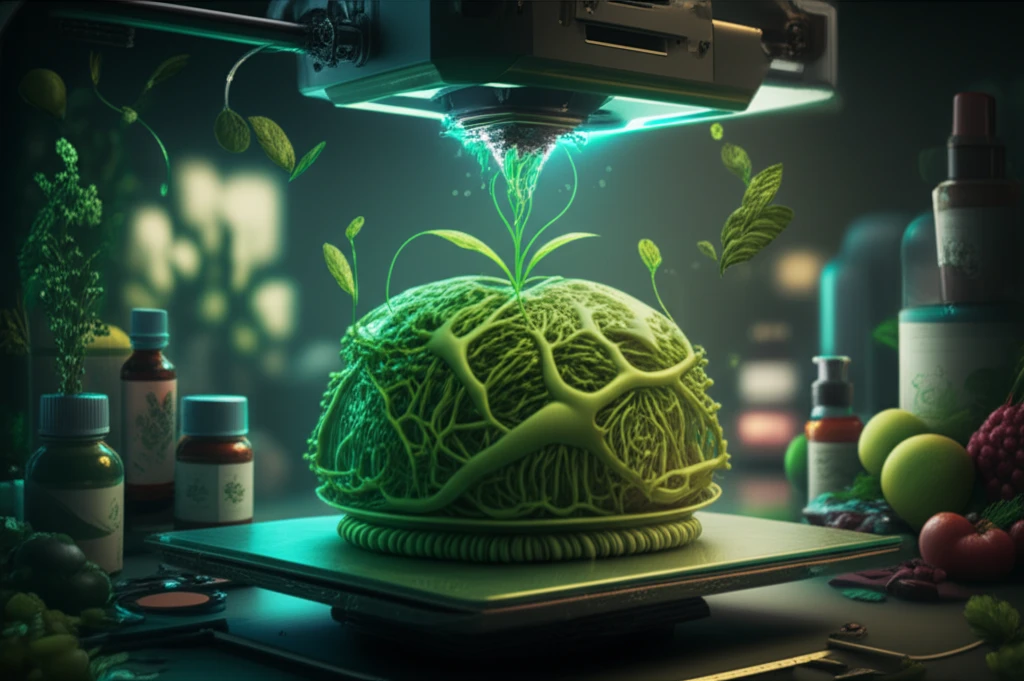
Green Bioprinting: Can 3D Printing Revolutionize Plant-Based Products?
"Explore how scientists are using 3D printing to create plant cell-laden structures, opening new doors for sustainable pharmaceuticals, cosmetics, and even designed foods."
For years, plant cell cultures have promised a sustainable source of valuable compounds used in pharmaceuticals, cosmetics, and food additives. However, controlling these cultures has been challenging. Now, scientists are exploring bioprinting—using 3D printing to arrange plant cells—as a way to boost production and gain unprecedented control over these natural factories.
Imagine creating customized plant-based products with specific benefits, like pharmaceuticals with enhanced potency or food with tailored nutritional profiles. Green bioprinting aims to make this a reality by allowing researchers to create three-dimensional structures with plant cells precisely arranged within. This level of control opens up new avenues for studying cell behavior, optimizing growing conditions, and ultimately, scaling up production of valuable plant-derived compounds.
This technology isn’t just about increasing production; it’s about understanding plant cell behavior in a controlled environment. By creating these 3D structures, scientists can study how cells interact, how nutrients are distributed, and how environmental factors influence growth and the production of desired compounds. This knowledge is crucial for developing efficient and sustainable biomanufacturing processes.
Unlocking Plant Potential: The Power of Green Bioprinting

Green bioprinting uses a blend of biology and technology. Researchers create a 'bioink'—a mixture of plant cells and a supporting material, usually a hydrogel. This bioink is then loaded into a 3D printer, which precisely deposits the material layer by layer, following a computer-designed model. This allows for the creation of intricate structures with plant cells in specific locations.
- Precise Control: Bioprinting offers unparalleled control over the placement and arrangement of plant cells, creating structures optimized for growth and production.
- Customizable Environments: Researchers can tailor the composition of the hydrogel and the geometry of the 3D printed structure to create specific growing conditions.
- Sustainable Production: Green bioprinting offers a sustainable alternative to traditional agriculture, reducing reliance on land, water, and pesticides.
- Diverse Applications: From pharmaceuticals to cosmetics to food, green bioprinting has the potential to revolutionize a wide range of industries.
The Future of Green Bioprinting: A World of Possibilities
Green bioprinting is still a young field, but the potential is enormous. As research progresses, we can expect to see more applications emerge. Imagine personalized medicine with plant-derived drugs tailored to an individual's needs, or sustainable food production systems that minimize environmental impact. Green bioprinting is poised to play a key role in shaping a more sustainable and healthier future.
